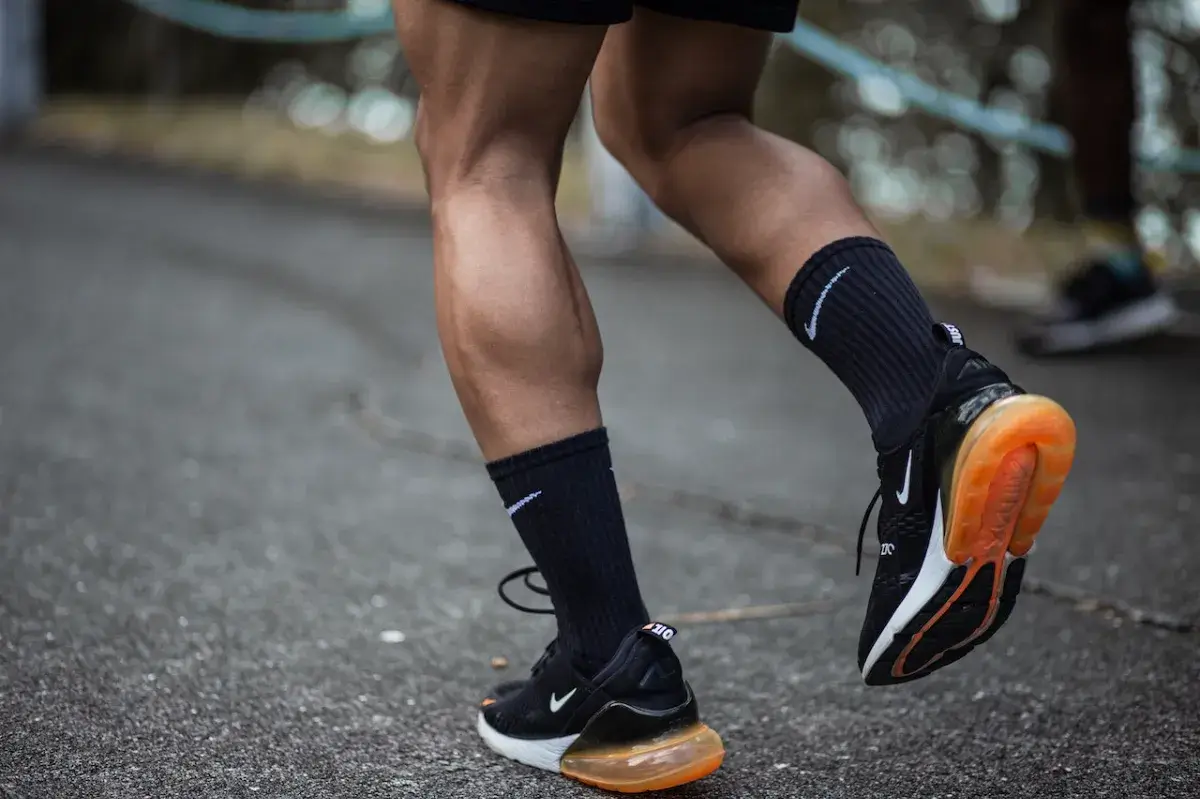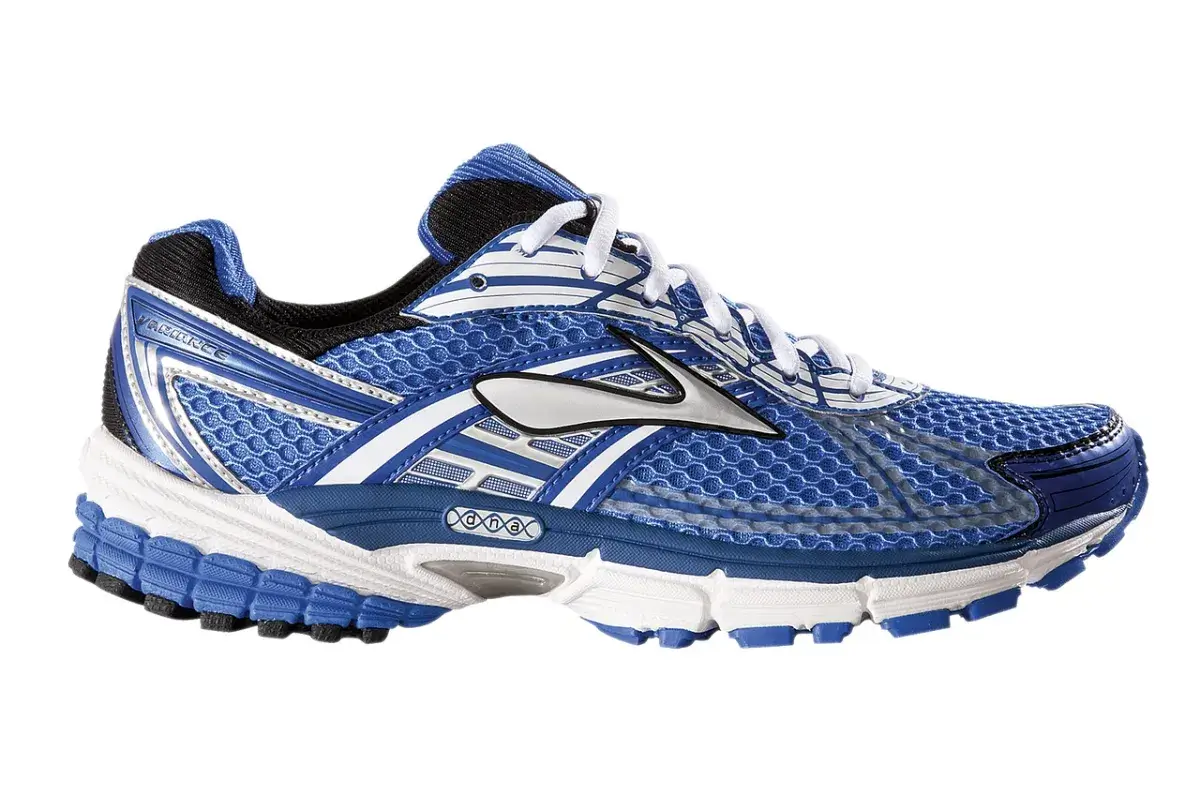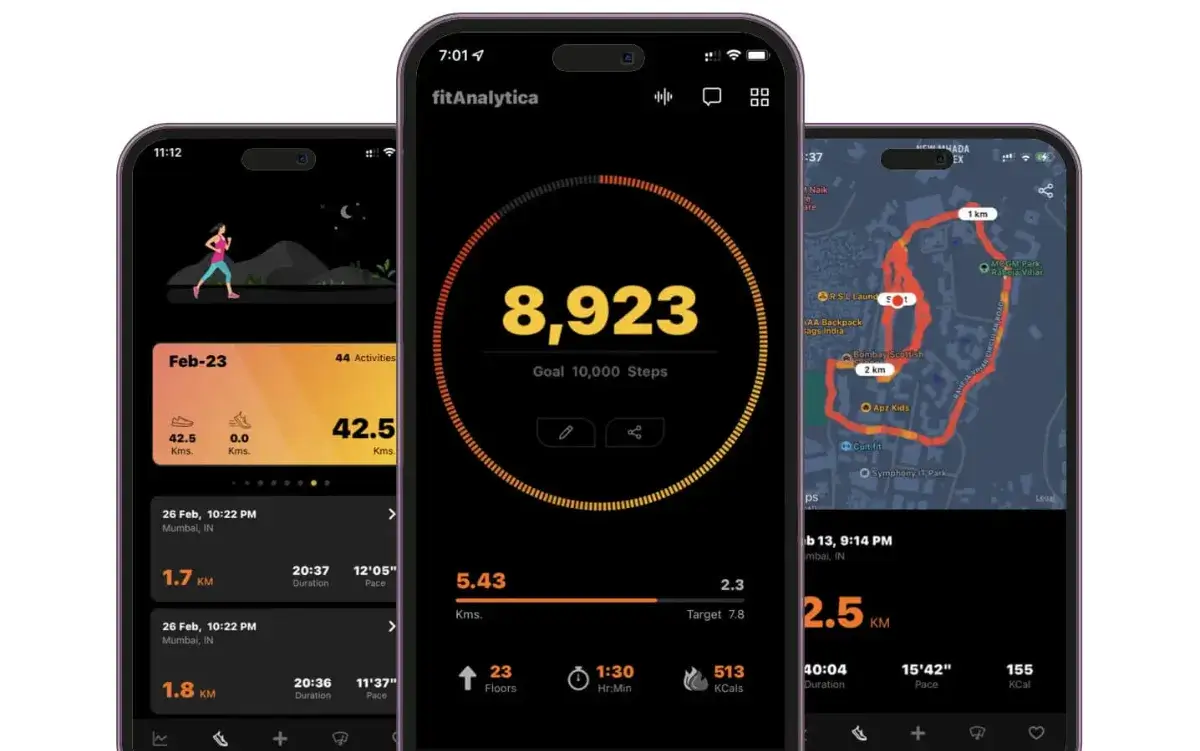Sprinting and running are two fundamental forms of cardiovascular exercise that offer numerous health benefits. Whether you're a beginner or a seasoned athlete, understanding the differences between these workouts and their usefulness is crucial for crafting an effective fitness regimen. This comprehensive guide delves into the mechanics of sprinting and running, exploring their impacts on muscles, fat loss, cardiovascular fitness, <a href="https://fitanalytica.com/blogs/fitness/crab-walking-exercise-boost-strength-and-agility-with-this-fun-exercise">muscle strength</a>, bone density, and more. We'll cover everything from techniques and training methodologies to potential drawbacks and injury prevention.
What's the difference between sprinting and running?
Sprinting and running are two distinct forms of exercise, each characterized by different biomechanics, energy systems, and intensities. Here's a breakdown of the critical differences between sprinting and running:
- Speed and Intensity: Sprinting involves running at maximal or near-maximal speed for short distances, usually 100 meters or less. It is an all-out effort that demands high-intensity exercise, explosive power, and rapid muscle contractions. On the other hand, running encompasses a wide range of speeds, from a leisurely jog to a moderate pace and even long-distance endurance running.
- Biomechanics: Sprinting requires a more pronounced forward lean, pumping arms at a faster rate, and a higher knee lift. Running involves a more upright posture, a steadier arm movement, and a balanced stride that varies based on pace.
- Muscle Engagement: When you sprint, you activate your fast-twitch muscle fibers, which boosts explosive power but can lead to quick fatigue. On the other hand, running involves a combination of fast and slow-twitch muscles, depending on the duration and intensity of your activity.
- Energy Systems: Sprinting relies on the anaerobic energy system, utilizing stored ATP and creatine phosphate for short bursts of energy. Running, particularly at moderate and endurance paces, relies more on the aerobic energy system, which utilizes oxygen to sustain more prolonged efforts.
- Training Focus: Sprint training is all about explosive power, speed, and anaerobic capacity while running training focuses on endurance, improving aerobic fitness, and developing pacing strategies.
- Physiological Response: Sprinting elicits a higher heart rate, rapid breathing, and a significant buildup of lactic acid due to the intense effort. Running, especially at lower intensities, can be sustained for longer durations without the same rapid accumulation of lactic acid.
- Distance: Sprinting typically covers short distances, whereas running encompasses a wide range of lengths, from sprints to ultramarathons.
- Heart Rate: Sprinting is a form of anaerobic exercise that often requires you to push your heart rate to 80-95% of the maximum heart rate. On the other hand, running requires you to move your heart rate to 60% of the maximum heart rate.

Muscles utilized during sprinting and running
Sprinting: During sprinting, explosive efforts activate fast-twitch muscle fibers, focusing on power and speed. The quadriceps, hamstrings, glutes, and calves are pivotal in generating forceful strides. The hip flexors and core muscles contribute to stability, facilitating quick bursts of energy. The low to medium-intensity part of sprinting challenges your muscles to produce maximum force in a short span, fostering explosive strength.
Running: Running targets slow-twitch muscle fibers that sustain endurance efforts. The primary muscle groups involved include the quadriceps, hamstrings, glutes, and calves. As you run, stabilizing muscles in the hips and core work to maintain posture and balance throughout the longer duration. This sustained engagement gradually improves muscle stamina and aerobic capacity.
Sprinting vs. Other Exercises
Sprinting stands out among various exercises due to its high-intensity nature and unique cardiovascular health benefits.
- High Intensity: Unlike steady-state exercises like jogging or cycling, sprinting involves short bursts of maximum effort. This high-intensity workout challenges cardiovascular capacity, promoting rapid calorie burn and improving anaerobic fitness.
- Calorie Burn: Sprinting can burn more calories per minute than other exercises due to its explosive nature. Hence Sprinting aids in weight management and fat reduction.
- Muscle Activation: Sprinting engages various muscle groups, including the legs, core, and upper body. This comprehensive muscle activation contributes to improved overall strength and conditioning.
- Metabolic Boost: Your body may experience an "afterburn" effect if you engage in a sprinting workout. Therefore, your body will keep burning calories at an elevated rate even after completing your activity.
- Time Efficiency: Sprint workouts can be shorter in duration than extended endurance exercises.
- Anaerobic Fitness: Sprinting enhances anaerobic fitness, improving the body's ability to perform high-intensity activities with high blood pressure and reduced oxygen availability.
- Variability: Sprinting can be adapted to various forms, such as hill sprints, interval training, or track sprints, offering versatility in training routines.
- Cardiovascular Health: Sprinting contributes to cardiovascular and heart health by challenging the heart and improving its efficiency.

Which is better for beginners, Sprinting vs. Running?
For beginners, the choice between sprinting and running depends on fitness goals, physical condition, and preferences.
Sprinting for Beginners: Sprinting may not be the ideal starting point for beginners, especially those new to exercise or with underlying health concerns. Sprinting involves intense bursts of speed that can place substantial stress on joints, muscles, and the cardiovascular system. Establishing a base fitness level and cardiovascular endurance through <a href="https://fitanalytica.com/blogs/fitness/brisk-walking-vs-jogging">regular jogging or walking</a> is advisable before incorporating sprinting workouts. Once a basic fitness level is achieved, beginners can gradually introduce short, sprinting workouts at intervals with proper guidance to avoid overexertion or injury.
Running for Beginners: Running is often more suitable for beginners, particularly at a moderate pace. It provides a lower-impact cardiovascular workout that gradually builds endurance and strengthens muscles and bones. Beginners can start walking and jogging, progressively increasing their running duration as their fitness level improves. This progressive approach helps prevent injury and allows the body to adapt to the demands of running.
Which is better for fat loss, Sprinting vs. Running?
Both sprinting and running can contribute to fat and weight loss, but the effectiveness depends on various factors, including intensity, duration, and individual preferences.
Sprinting for Fat Loss: Sprinting is known for its high-intensity nature, which can quickly lead to a significant calorie burn. The explosive effort required during sprinting engages fast-twitch muscle fibers and elevates the heart rate, leading to increased calorie burn and fat loss. Additionally, sprinting can stimulate the afterburn effect, where the body continues to burn more calories after the sprinting workout. Thus Sprinting can contribute to <a href="https://fitanalytica.com/blogs/weight-management/walking-your-way-to-a-slimmer-you">weight loss and improved metabolic rate</a>.
Running for Fat Loss: Running at a moderate, slower pace, such as jogging, is a steady-state aerobic exercise contributing to fat loss. While the calorie burn per minute may be lower than sprinting, the longer duration of running sessions can lead to substantial calorie expenditure. Jogging engages slow-twitch muscle fibers and relies on aerobic metabolism, making it an effective method for fat oxidation.
Which is better for Strengthening Muscles & Bones, Sprinting vs. Running?
Both sprinting and running can contribute to muscle growth and bone strength, but they target different aspects of your musculoskeletal system.
Sprinting for Muscle and Bone Strengthening: Sprinting engages many muscles, including the quadriceps, hamstrings, glutes, and core muscles. The explosive nature full speed of sprinting requires these muscles to generate maximum force, leading to improved muscle power and strength during sprinting vs. other sprint workouts. Additionally, the impact of sprinting stimulates improved bone density muscle cells, especially in the lower body, due to the high forces applied during each stride.
Running for Muscle and Bone Strengthening: Running, particularly at a moderate pace, primarily engages slow-twitch muscle fibers. While the intensity may not be as high as sprinting, the sustained engagement of muscles during running can lead to muscular endurance development. Running strengthens bones, particularly weight-bearing bones like the legs and hips. The repetitive impact of each step can promote bone density over time.
Which is Most Effective for Cardiovascular Fitness, Sprinting vs. Running?
Both sprinting and <a href="https://www.health.harvard.edu/staying-healthy/run-for-a-healthier-life">running can contribute to cardiovascular health</a> and physical fitness. Still, both exercises have distinct impacts on your body composition and cardiovascular system due to differences in intensity and duration.
Sprinting for Cardiovascular Fitness: Sprinting is a high-intensity exercise that elevates your heart rate quickly and significantly. It engages the anaerobic energy system, which relies on stored energy rather than oxygen. This type of exercise enhances the heart's ability to pump blood efficiently and increases the capacity of your cardiovascular system to deliver oxygen to muscles. Sprinting improves cardiovascular health and fitness by challenging your heart to work at maximum capacity for short bursts.
Running for Cardiovascular Fitness: Running engages the aerobic energy system, which relies on oxygen for sustained energy production. This exercise improves your heart's endurance by gradually increasing your heart rate over an extended period. Running at a moderate pace increases lung capacity, strengthens the heart muscles, and enhances the efficiency of oxygen transport throughout the body.

Which is better for race training, Sprinting vs. Running?
Training for a race depends on the type of race and your specific goals. Both sprinting and running can be valuable components of race training, but their effectiveness varies based on the race distance and requirements.
Sprinting for Race Training: Sprinting suits shorter distance races, such as sprints or shorter track events. Training with sprint intervals can enhance explosive power, speed, and anaerobic capacity. It's particularly beneficial for improving your ability to accelerate quickly and maintain high speeds for short distances.
Running for Race Training: Running, especially at longer distances, is ideal for training for 5K, 10K, half marathon, marathons, and marathons. Running builds endurance, strengthens aerobic capacity, and improves pacing skills. Long-distance training prepares your body to sustain effort over extended periods, making it essential for longer distances that require steady pacing and energy conservation.
Which is better to Build Muscle mass, Sprinting vs. Running?
Traditional strength training and resistance exercises are more effective when building muscle mass than sprinting or running.
Strength Training for Building Muscle Mass: Strength training includes weightlifting, resistance band workouts, and bodyweight exercises. This type of resistance training specifically targets muscle hypertrophy (muscle growth) by overloading muscles with progressively heavier weights or resistance. Compound exercises like squats, deadlifts, bench presses, and rows are particularly effective in stimulating muscle growth across various muscle groups.
Sprinting and Running for Building Muscle Mass: While sprinting and running engage muscles, their primary focus is cardiovascular endurance and energy efficiency rather than maintaining muscle mass and hypertrophy. Sprinting can activate fast-twitch muscle fibers, contributing to some muscle development, but it is less effective than dedicated strength training for building significant muscle mass. On the other hand, long-distance running can even lead to muscle loss in extreme cases due to the body's efforts to reduce excess weight.
Which is better for Bone Health, Sprinting vs. Running?
Both sprinting and running can contribute to bone health, but they impact bones in slightly different ways.
Sprinting for Bone Health: Sprinting involves high-impact, explosive movements that stimulate bone growth and increase bone density. When sprinting, the body produces rapid forces that cause the bones to strengthen and become denser. This adaptation can ultimately reduce the likelihood of developing osteoporosis or experiencing fractures.
Running for Bone Health: Running, especially at a moderate pace, also benefits bone health. The repetitive impact of each step during running helps stimulate bone remodeling, improving bone density over time. However, the impact forces during running are generally lower compared to sprinting.

Do Sprints Burn Belly Fat?
Incorporating sprints into your high-intensity interval training (HIIT) routine can be efficient for shedding body fat, particularly around the belly area. Sprinting demands considerable energy quickly, resulting in a higher calorie burn. Moreover, the high intensity of sprints increases heart rate and metabolism, which triggers the afterburn effect. As a result, your body keeps burning calories long after your sprint workout, reducing overall body fat, including stubborn belly fat.
Incorporating Sprint Training into Fitness Routine
Incorporating sprint workouts into your fitness routine can benefit cardiovascular fitness, fat loss, and overall athleticism. Here's a guide to help you seamlessly integrate incorporating sprinting activities and cardiovascular fitness together:
- Warm-Up Thoroughly: Before sprinting, warm up with dynamic stretches, light jogging, or mobility exercises to prepare your muscles and joints.
- Start Slowly: If you're new to sprinting, begin with short sprints at a moderate pace. Gradually increase the intensity, stride length, and duration as your fitness improves.
- Choose a Suitable Surface: Opt for a flat, smooth surface to minimize the risk of injuries. Tracks, grassy fields, or even a clear path in a park can be good options.
- Sprint Intervals: Alternate between short sprinting and active recovery periods. For example, practice sprinting for 20-30 seconds, followed by 1-2 minutes of walking or slow jogging to recover.
- Progress Gradually: Increase the high-intensity interval training duration and even practice sprinting at intervals over time. Be cautious not to overexert yourself, especially at the beginning of weight training.
- Rest and Recovery: Allow ample time for rest between sprint sessions to prevent overtraining and reduce the risk of injury.
- Mix with Strength Training: Combine your sprinting workouts with strength exercises to create a balanced running routine. This can help improve overall fitness and prevent muscle imbalances.
- Frequency: Aim for 1-3 sprint sessions per week, depending on your fitness level and goals.
- Listen to Your Body: Listening to your body's signals is essential. If you feel any pain or discomfort, take a break and rest.
- Cool Down: After sprinting, cool down with light stretches to maintain flexibility and aid recovery.
- Hydration and Nutrition: Stay hydrated and eat nutrient dense balanced diet to support your sprint training and recovery.
- Track Progress: Keeping track of your sprint times and distances is a good idea. This can help you stay motivated and set achievable goals for yourself.

How can I avoid getting injured while sprinting, running, or jogging?
Incorporating effective injury <a href="https://www.betterhealth.vic.gov.au/health/healthyliving/running-and-jogging-health-benefits">prevention measures is crucial when engaging in sprinting, running, or jogging</a>. Begin by ensuring a proper warm-up that includes dynamic stretches and light movements to prepare muscles and joints. Gradually increase intensity and distance to prevent overexertion and strain. Select suitable footwear with ample support and cushioning to minimize the impact on joints. Focus on maintaining proper form during your activity to reduce the injury risk because of strains or imbalances.
Strengthening key muscle groups through targeted exercises can enhance stability and reduce the likelihood of injury. Listen to your body, recognizing signs of discomfort or pain, and stop immediately if any issues arise. After working out, you must cool down with some stretches to help your muscles recover and stay flexible. <a href="https://fitanalytica.com/blogs/weight-management/5-best-smoothie-recipes-for-a-healthier-you">Stay hydrated</a> and maintain a balanced diet to achieve optimal health and well-being. This is crucial for muscle recovery too. Adequate rest and active recovery days are essential for your body to recuperate. Seeking guidance from fitness professionals can help refine your technique and training approach. Addressing muscle imbalances and promptly treating injuries are equally vital components of a comprehensive injury prevention strategy. By integrating these measures, you can enjoy your activities while significantly reducing the risk of injuries.

What type of footwear is best for each speed?
Selecting the proper footwear for different running speeds is crucial for comfort, performance, and injury prevention. Here's a guide on choosing the appropriate running shoes based on your speed:
- Easy and Moderate Pace: For casual jogging or moderate-paced runs, consider cushioned running shoes. These provide adequate shock absorption and support for low-impact activities. Look for shoes with a balanced combination of cushioning and responsiveness.
- Speed Work and Intervals: Opt for lightweight and responsive running shoes when engaging in speed work or interval training. These shoes offer a closer ground feel, allowing quicker transitions between strides and enhanced propulsion.
- Long-Distance Running: For longer distances, such as half-marathons or marathons, choose shoes with ample cushioning to reduce the impact on joints. Look for models designed for endurance, offering enhanced comfort and support over extended periods.
- Trail Running: If you're tackling trails, wear running shoes with durable outsoles for traction on uneven terrain. These shoes often have added protection to shield your feet from rocks, roots, and debris.
- Sprinting: For sprinting and short bursts of high-speed running, lightweight racing or minimalist shoes can enhance your athletic performance further. These shoes prioritize speed and responsiveness.
- Barefoot Running: Some runners prefer minimal or barefoot-style shoes for a more natural gait. However, transitioning to barefoot-style running requires careful adaptation and proper technique to prevent injury.
- Consider Individual Needs: Factors like arch type, foot width, and any existing biomechanical issues should influence your choice. Getting a professional fitting at a specialized running store can offer valuable insights. Remember, the best shoe for each speed depends on your preference, comfort, and running style.

fitAnalytica - Your Best Companion during an activity
<a href="https://apps.apple.com/us/app/fitanalytica-step-counter/id1513693341">FitAnalytica is your trustworthy companion throughout your fitness journey</a>, whether engaged in high-intensity sprinting or a steadier running pace. Its comprehensive features empower you to track and manage your performance metrics effortlessly.
For sprinters pushing their limits, fitAnalytica allows you to closely monitor the distance covered, providing valuable insights into your speed and agility. Additionally, the app calculates the calories burnt during these intense bursts of activity, aiding in understanding energy expenditure.
For those opting for a more enduring form of exercise like running, fitAnalytica offers the ability to track distance and gauge your pace over time. Furthermore, the app records the elevation gained during your run, helping you analyze the varying terrain challenges you've conquered.
No matter your choice of activity, fitAnalytica's array of functionalities empowers you to make informed decisions about your fitness routines. Whether sprinting or running, you can rely on fitAnalytica to provide accurate data that supports your goals and enhances your overall fitness experience.
Conclusion
Sprinting and running are dynamic workouts that cater to distinct fitness goals and preferences. Understanding their nuances empowers you to make informed choices, optimizing your exercise routine for maximal cardiovascular benefits throughout. Whether striving for weight loss, muscle gain, cardiovascular fitness, or overall health and well-being, incorporating sprinting and running can lead to a well-rounded and fulfilling fitness journey. Remember to consult with healthcare professionals before embarking on any new fitness workout routine, ensuring your safety and success.
